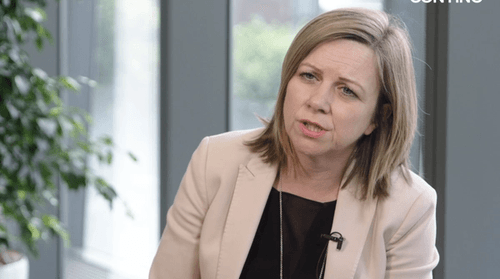Major Retail Bank: Mapping Out a Data-Driven Cloud Migration Plan with Demonstrable ROI
The Client
The client – a multinational credit card and payment services provider with over 10 million customers and a division of a major retail bank – made a strategic decision to migrate to the cloud. But with over 800 IT teams and thousands of applications where do they begin?
The Challenge
The client is undergoing a bank-wide digital transformation in order to increase the capacity to innovate at speed and scale in response to the rising wave of born-in-the-cloud competition. On the one hand, novel, smartphone-only banks such as Monzo are moving into the mainstream, on the other, existing giants such as Apple and Google are expanding into the mobile payments space.
But how does a bank with over 800 IT teams and thousands of applications make any kind of significant dent in their time-to-market? The most impactful move that can be made is to migrate to the public cloud.
The public cloud offers possibilities for flexibility, scalability and deep automation that on-premises setups just can’t compete with. It enables devs to instantly spin up servers, to automate testing and to embed security and compliance policies early on in the software delivery lifecycle. Combined with DevOps ways of working, the cloud can significantly accelerate the time it takes to get new digital products into the hands of customers.
After prior experiments with the cloud for their infrastructure and managing containers, the client made a strategic decision to migrate their existing application portfolio to the cloud in order to reduce costs and increase their innovation capability.
But there are challenges when migrating to the cloud. Some applications are quite small and more or less cloud-ready. These can be migrated with little fuss. Others are enormous, service over a million customers, have a lot of technical debt and need to be completely reworked for a cloud environment. Some teams have the skills and experience and are raring to go. Others less so. How do you go about migrating such a collection of heterogeneous apps and teams to the cloud?
The Solution
To get some answers to these questions, the client underwent a rapid ‘cloud readiness’ assessment to analyze a portfolio of 20 key mobile and payment applications.
The assessment is designed to use qualitative and quantitative data to determine the cloud readiness of key applications, as well as the level of effort required to migrate each application to the cloud. For more complex apps it would also shed light on whether or not any application remediation would be required (re-architecting the app to be suitable for a cloud environment). Lastly, it calculates the long-term return-on-investment (ROI) and agility benefits of increased time-to-market and reduced costs versus the upfront cost of remediation and migration.
The client engaged Contino to execute the assessment, as Contino has already completed cloud migrations with many of the world’s largest financial services organizations, such as Allianz and HSBC. The assessment covered an internal survey and deep discovery sessions with each team. The resultant data was pulled together to give an overall ‘migration score’ for each application.
The Result
Approximately 40% of applications were in a ‘cloud-ready’ state and can be migrated to the cloud with relatively little effort. Around 30% will require some remediation and effort to migrate. The remainder require significant changes to prepare them for the cloud.
In terms of the client’s teams, 60% of application teams have the level of DevOps capability required for cloud-native delivery, which is encouraging. Previous experimentation with the cloud has clearly proven useful in laying the foundation for this migration.
With this data, the client is now in a superior position from a strategic perspective. Low-hanging fruit has been identified and, where more work is required, exactly how many days’ work that will entail is known. Applications that are too much trouble for the time being can be left – but these only make up a relatively small slice of the portfolio.
Using the results from the assessment, the client has now mapped out a data-driven cloud migration roadmap with demonstrable ROI. This kind of information is crucial for carefully steering a digital transformation project of such scope and ambition.
The next stage is to develop a lighthouse project for migrating an application to AWS. The client will get a valued deliverable to market, prove the technical and governance characteristics of working in the cloud before scaling the practices across the business in a controlled and determined way.



